IS THE EMPTY CENOTAPH AT KHUSRAU BAGH OF NUR JAHAN HERSELF?
EDWARD BACKHOUSE EASTWICK RECORDS SAME IN MURRAYS HANDBOOK 1882
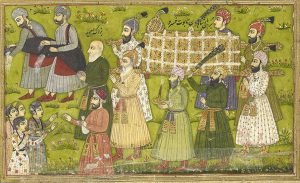
POINT MISSED BY MOST HISTORIANS OF THE REGION
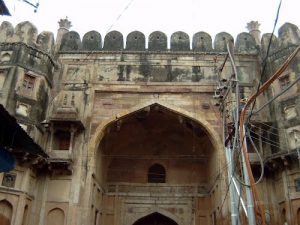
Prince Saleem was only 15 years old, when Emperor Akbar proposed his marriage to Man Bai (name unknown perhaps Jodha Bai like her aunt), daughter of Raja Bhagwan Dass. It was a joyous affair. as the young Man Bai (Jodha Bai) and the young Prince Saleem consummated their marriage with great pomp. But here something was different. Both of them were in real love with each other. And Jahangeer himself could write that she had the capacity to sacrifice anything for him. And what was more than her life? When their eldest child, Prince Khusrau rebelled against his father, Man Bai (Jodha Bai) felt so ashamed, that she committed suicide by taking opiates as poison. Although Jahangeer writes of the death as on 1013 AH, she actually died on 16th May 1604 (1012 AH). Jahangeer was in control of Allahabad, and proposed her mausoleum to be built in the Khuldabad Serai that he had built (katba on the entrance) and now known as KHUSRAU BAGH.
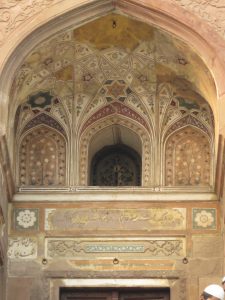
There are many monuments which have remained intact with time but there are no historical references to them. The mausoleum of Shah Begum (Man Bai Jodha Bai) was selected by Jahangeer himself, and he buried her there, with his own hands. It was the FIRST MAUSOLEUM to be built in that serai. Archaeologists also call it the second in line of the complex. When Khusrau died in Burhanpur (colic pain or murder, a separate issue), Jahangeer ordered him to be reburied near his mother. The second mausoleum in the complex. But there is a third mausoleum there on a large scale, the most grandiose building of all three. The conclusions are pure conjecture with time. There is no official record.
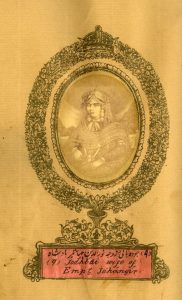
There is no official record of same. However a number of travelers have given their opinion on same. And strangely most of them were of British origin. The man who started it all was Peter Mundy, who visited the place in 1632. He was the first person to name the three maqbaras, as being of Khusrau, his mother and his sister. And he says that the sister is still alive and building the same for her future mausoleum. The mausoleum of Prince Khusrau has inscriptional writing on it. So that is settled. The same applies to the mausoleum of his mother Jodha Bai (known as Shah Begum). Shah Begum was daughter of Raja Bhagwan Dass and grand daughter of Raja Bihari Mal. Her death upsetted Jahangeer so much that he neither ate or drank for four days as an act of condolence for his lost love. The third mausoleum has NO ONE BURIED IN IT and has been attributed by Britishers as that of being the empty cenotaph of Sultan un nisa (Sultan Nisar) Begum, eldest daughter of Jahangeer. Sultan Nisar was born on 25th April, 1586 and died on 5th September, 1646. According to her own wishes, she was buried in the Akbar complex at Sikandara. Muhammed Salih records same in his book Amal-Salih. When a most befitting mausoleum was awaiting her, with the mausoleums of her mother and brother, why did she kept away from her own construction? There is no likelihood of this happening in any way. The couplet at the entrance mentioning NUR NISAR has confused us all.
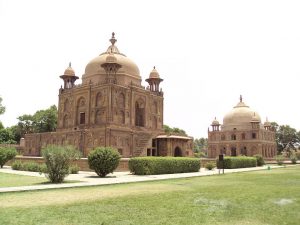
The unknown CENOTAPH was actually never completed and it is proposed that it was made in 1625. In 1627 Jahangeer died and in the battle of succession, Empress Nur Jahan was brought to Lahore as a political prisoner. She lived here for 18 years, with a pension of 2 lakh rupees per anum, but was not allowed to leave the city (lest she indulges in political wrangling). She died on 18th December, 1645. Sultan Nisar Begum died on 5th September, 1646. Both dates very close to each other.
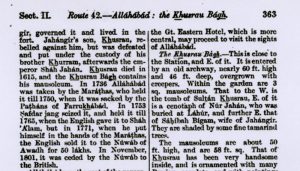
Empress Nur Jahan had no more access to the mausoleum built by her for her own self. She lost interest in same, when Khusrau, her political opponent was buried there. There was a need to build a second mausoleum for herself, and she did same in Lahore, where she actually got buried, before her bones were stolen by Sikh marauders. The confusion of the identity of the graves in Khusrau Bagh is not new. It existed all the time. A leading writer of Allahabad in his extensive research on Khusrau Bagh, claims that it is known that the identity of the empty cenotaph is that of Laila Begum, and Laila may be be a name of Begum Sultan Nisar. This was in 1933, so on can Imagine nothing was clear even then. The fourth place of Tambulan Begum is still an unknown thing.
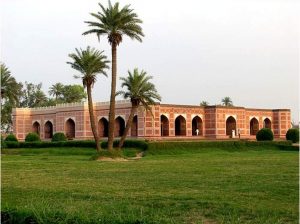
Did this ever got recorded? Yes. In the Murray’s Handbook of Bengal, Edward Backhouse Eastwick, a famous historian of his times, names the empty Cenotaph as that of Empress Nur Jahan, and tells us that she was buried in Lahore. (Picture enclosed of text) . There is one more proof. The historian Dr Abdullah Chaghatai in his writings write of his study of the grave of Ladli Begum daughter of Empress Nur Jahan at Khusrau Bagh. An empty cenotaph of mother and actual daughter buried there, and an actual grave of mother and and empty cenotaph of the daughter in Lahore. History is full of strange wonders!
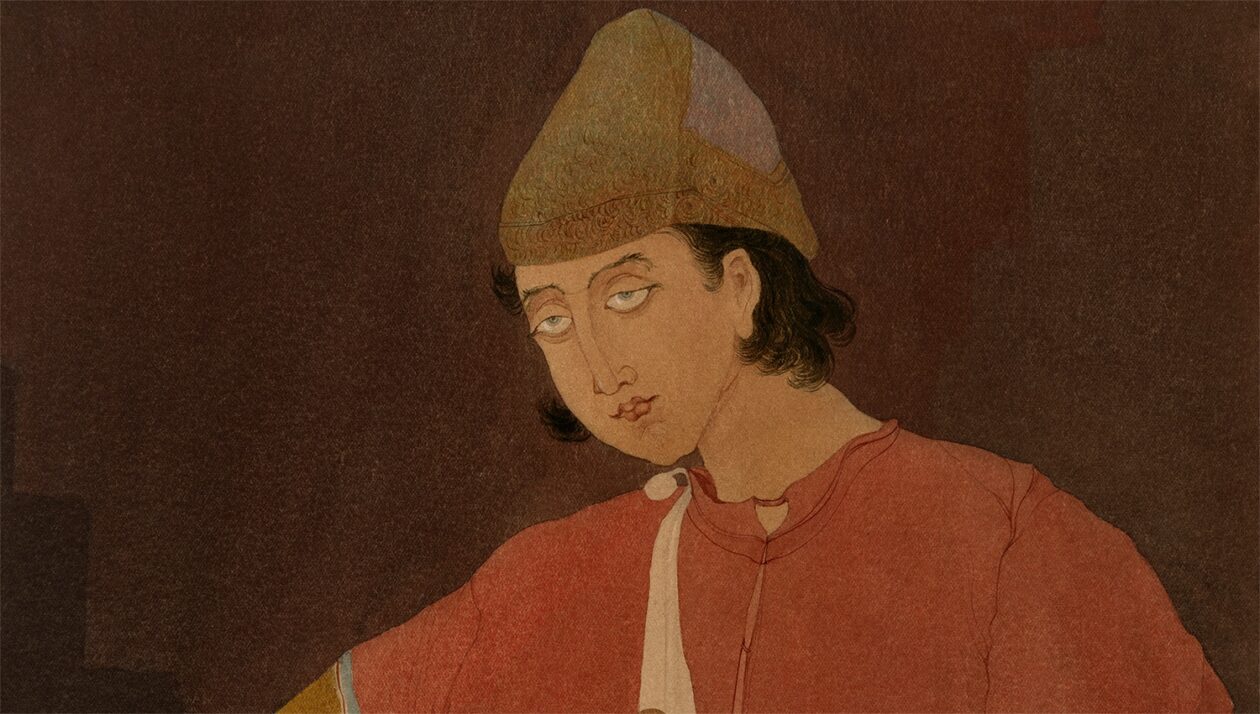
How many could even guess this